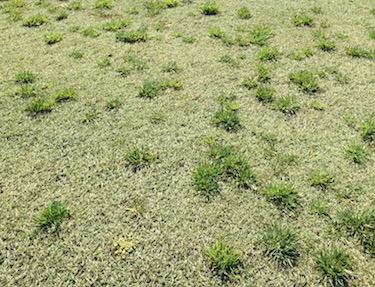Jason Henderson, Associate Professor of Turfgrass and Soil Sciences, University of Connecticut, recently contributed this post on The Conversation US, a website that arose out of deep-seated concerns for the fading quality of our public discourse – and recognition of the vital role that academic experts can play in the public arena.
Independent and not-for-profit, it is part of a global network of newsrooms first launched in Australia in 2011:
Turfgrass covers more than 40 million acres of land in the continental United States, including lawns, parks, commercial landscapes, sports fields and golf courses. It is the single largest irrigated crop in the nation.
Turfgrasses are grass species with qualities that make them well suited for these uses. They tolerate frequent mowing, withstand intense traffic and form dense, uniform surfaces. They create places to play sports or relax outdoors; reduce soil erosion; reduce dust and mud problems around homes, schools and businesses; and create clear sight lines along highways.
Often, however, the turfgrass industry is criticized for using significant quantities of water, fertilizer and pesticides. Pesticides have come under especially intense scrutiny as concerns increase over potential health risks.
In many places pesticide legislation has advanced faster than alternative pest control methods. As a researcher specializing in turfgrass and soil sciences, I’m interested in new options and have developed a completely new method and tool for turfgrass management that kills weeds without applying chemicals.
Read it all here


